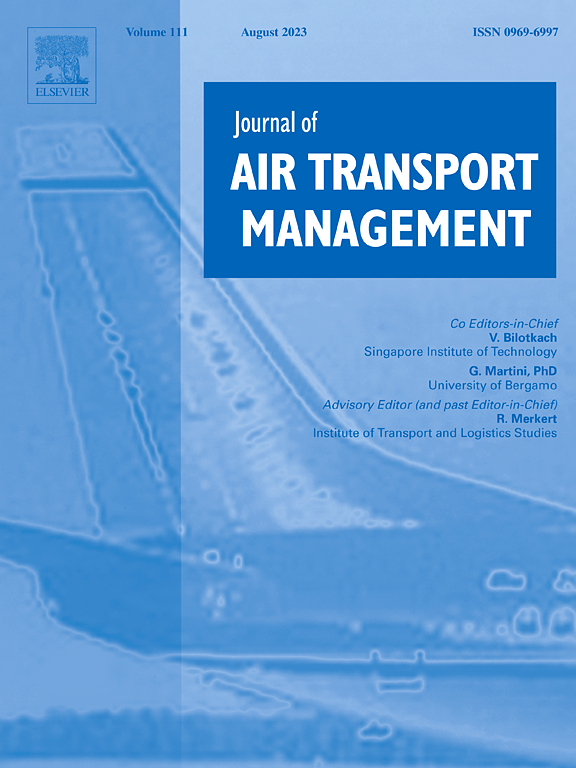Urban air mobility for airport access: Mode choice preference associated with socioeconomic status and airport usage behavior
IF 3.9
2区 工程技术
Q2 TRANSPORTATION
引用次数: 0
Abstract
This study examined mode choice preference for airport access given the introduction of Urban Air Mobility (UAM) airport shuttle service and its associations with socioeconomic status and airport usage behavior. We designed the stated preference survey targeting Incheon International Airport in South Korea and collected data from 2604 respondents. We provided six scenarios composed of a combination of experimental attributes (travel time, travel cost, and transfer frequency) for five alternative transport modes (airport train, airport bus, taxi, passenger car, and UAM) to each respondent and asked them to choose one most preferred mode in each scenario. A mixed multinomial logit model was used to consider the underlying characteristics of the collected data. The modeling result confirms that the preference for taking UAM varies by people's socioeconomic status and airport usage behavior. People who have higher incomes, frequently use taxis, and want to arrive at airports quickly before boarding are more likely to take UAM for airport access. The findings imply that UAM may be able to become a kind of taxi service operating in the sky, but its expensive fares may discourage its popularization. The findings extend previous studies of airport-oriented UAM service as one of the first studies to consider airport usage behavior. This study provides policymakers with insight into feasible strategies to make UAM service a practical transportation mode for the public.
城市空中交通对机场使用的影响:与社会经济地位和机场使用行为相关的模式选择偏好
本研究考察了城市空中交通(Urban Air Mobility, UAM)机场班车服务引入后的机场出行模式选择偏好及其与社会经济地位和机场使用行为的关系。我们设计了针对韩国仁川国际机场的偏好调查,并收集了2604名受访者的数据。我们为每位受访者提供了五种可供选择的交通方式(机场火车、机场巴士、出租车、客车和UAM)的六个场景,这些场景由实验属性(旅行时间、旅行成本和换乘频率)组合而成,并要求他们在每个场景中选择一种最喜欢的模式。使用混合多项logit模型来考虑所收集数据的潜在特征。建模结果证实,乘坐UAM的偏好随人们的社会经济地位和机场使用行为而变化。那些收入较高、经常乘坐出租车、希望在登机前快速到达机场的人更有可能乘坐UAM前往机场。研究结果表明,UAM可能会成为一种空中出租车服务,但其昂贵的票价可能会阻碍其普及。该研究结果扩展了先前对机场导向的UAM服务的研究,成为首批考虑机场使用行为的研究之一。本研究为政策制定者提供了可行的策略,使UAM服务成为一种实用的公共交通方式。
本文章由计算机程序翻译,如有差异,请以英文原文为准。
求助全文
约1分钟内获得全文
求助全文
来源期刊

Journal of Air Transport Management
TRANSPORTATION-
CiteScore
12.40
自引率
11.70%
发文量
97
期刊介绍:
The Journal of Air Transport Management (JATM) sets out to address, through high quality research articles and authoritative commentary, the major economic, management and policy issues facing the air transport industry today. It offers practitioners and academics an international and dynamic forum for analysis and discussion of these issues, linking research and practice and stimulating interaction between the two. The refereed papers in the journal cover all the major sectors of the industry (airlines, airports, air traffic management) as well as related areas such as tourism management and logistics. Papers are blind reviewed, normally by two referees, chosen for their specialist knowledge. The journal provides independent, original and rigorous analysis in the areas of: • Policy, regulation and law • Strategy • Operations • Marketing • Economics and finance • Sustainability
 求助内容:
求助内容: 应助结果提醒方式:
应助结果提醒方式:


